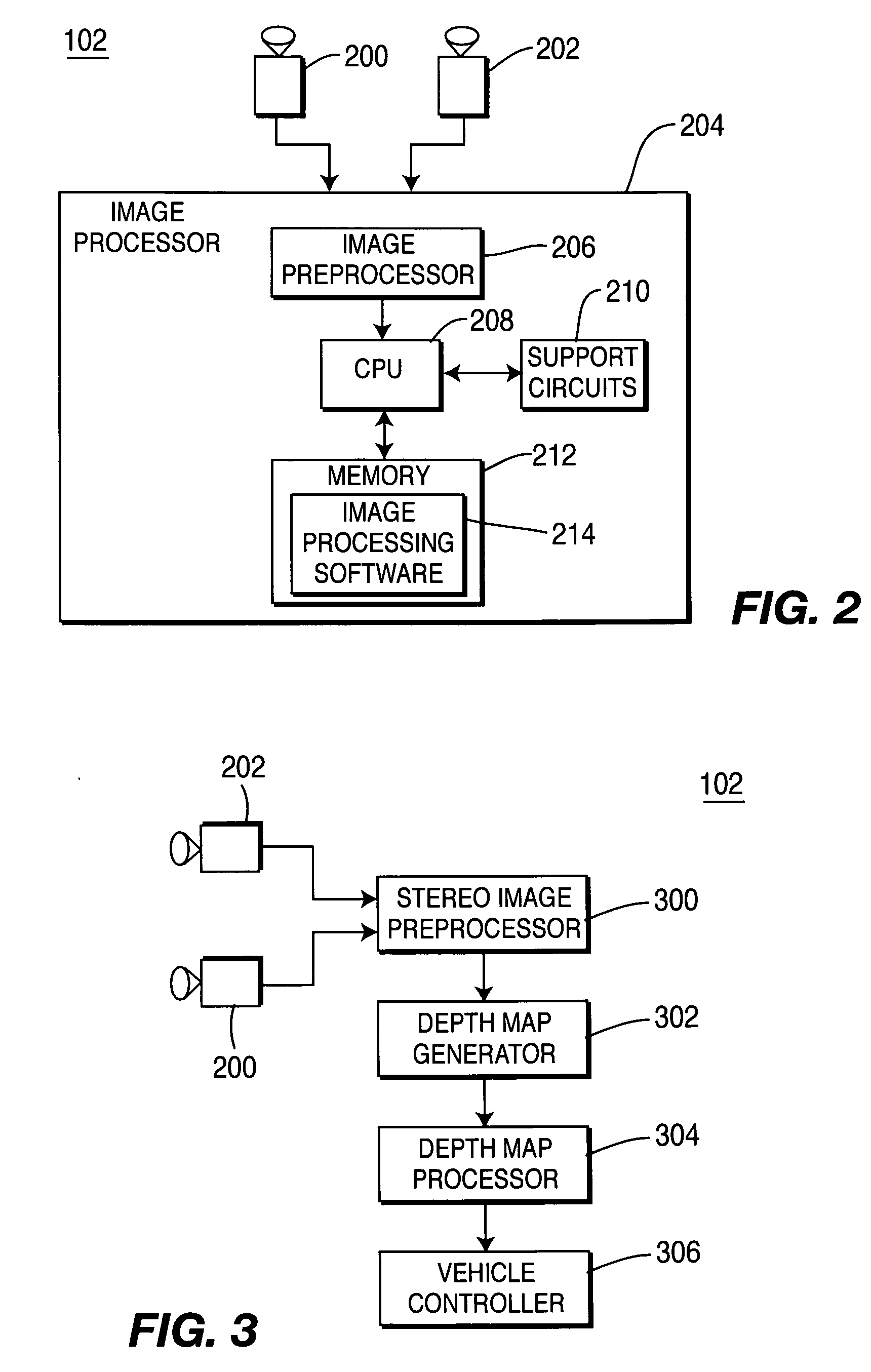Method and apparatus for detecting obstacles
a technology of obstacles and methods, applied in the field of vision systems, can solve the problems of inability to model the earth as a simple plane, general inaccurateness, and unnecessary evasion by the vehicle, and achieve the effect of accurately making decisions and easy traversing
- Summary
- Abstract
- Description
- Claims
- Application Information
AI Technical Summary
Benefits of technology
Problems solved by technology
Method used
Image
Examples
Embodiment Construction
FIG. 1A depicts a side view of a vehicle 100 having a movement system 101 traversing off-road terrain and FIG. 1B depicts a top view of the terrain in FIG. 1A. The vehicle 100 contains a stereo imaging system 102 having at least a pair of sensors or cameras mounted to the front of the vehicle. In one illustrative embodiment, the vision system 102 is capable of processing video at a rate of ten frames per second or faster in real time and produces an obstacle map that has a resolution that is fine enough to identify a pathway that is a little wider than the vehicle itself. The vehicle may be an unmanned ground vehicle (UGV) that uses the obstacle detection method of the present invention to enable the vehicle's control system to direct the vehicle around detected obstacles. Alternatively, the invention could also be used as an obstacle avoidance warning system for a manned vehicle or for a system that detects the slope of terrain to enable a driver to understand whether the slope is ...
PUM
 Login to View More
Login to View More Abstract
Description
Claims
Application Information
 Login to View More
Login to View More - R&D
- Intellectual Property
- Life Sciences
- Materials
- Tech Scout
- Unparalleled Data Quality
- Higher Quality Content
- 60% Fewer Hallucinations
Browse by: Latest US Patents, China's latest patents, Technical Efficacy Thesaurus, Application Domain, Technology Topic, Popular Technical Reports.
© 2025 PatSnap. All rights reserved.Legal|Privacy policy|Modern Slavery Act Transparency Statement|Sitemap|About US| Contact US: help@patsnap.com



